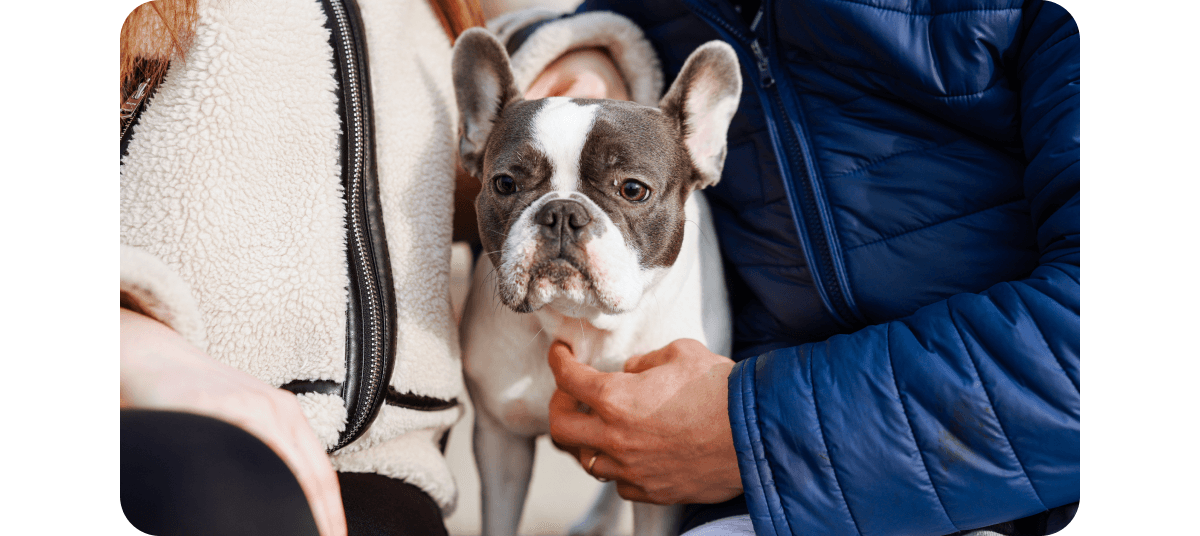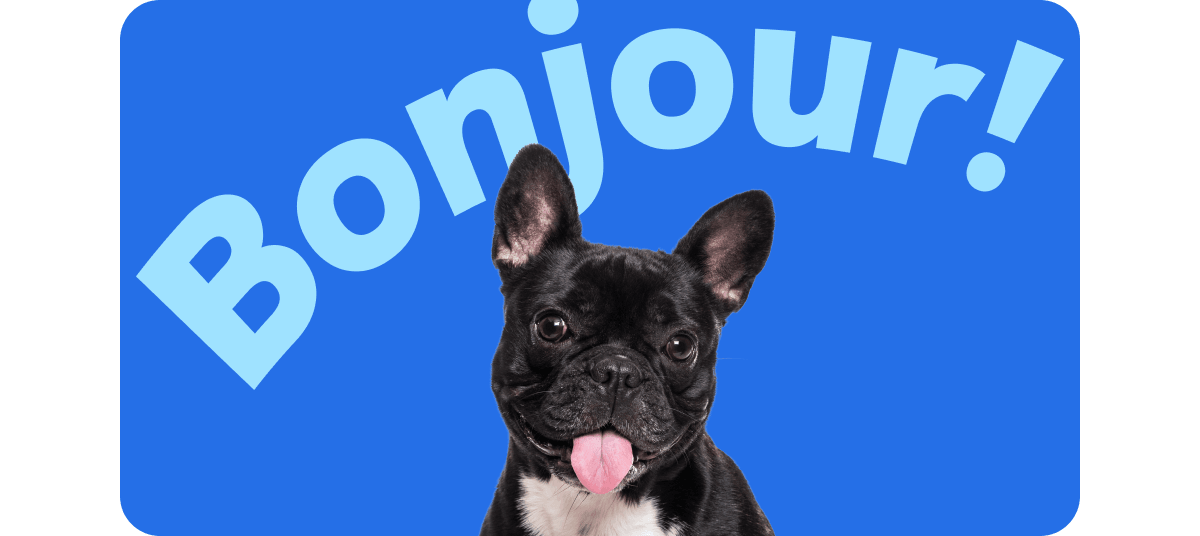Everything you need to know about Italian Greyhounds

Summary
With history going back as far as Ancient Rome, they're little hunting hounds and companions.
Key Stats
Height
32 to 38cm
Weight
3.5 to 6kg
Size
Small (Toy)
Lifespan
12 to 15 years
Coat
Short, smooth
Exercise
1 hour daily
Grooming
Weekly
Temper
Calm, gentle, affectionate
Breed history
The Italian Greyhound’s history goes back to the ancient Greeks and Romans. They were bred to be fast and agile hunting dogs for small prey, as well as a companion.
They later became popular in Renaissance Italy, and were a favourite pet for the nobility. They were often featured in art as a symbol of wealth and elegance. The "Italian" in their name pays homage to their popularity in Italy during this period.
These graceful dogs continue to be popular thanks to their refined look and affectionate nature. Although now their use as hunting hounds has pretty much vanished.
Appearance
They’re dainty and elegant dogs. They have a slender and streamlined body to help them be as fast and agile as possible. They have long, slim legs but they’re not very tall, and they’re usually around 32 to 38 cm tall at the shoulder. They should look lean and athletic with a deep chest and a tucked abdomen.
They’ve got a short, sleek coat that lies close to their body. They only have a single coat, so they don’t shed much and aren’t “fluffy”, but they’re still very soft.
These dogs have a long, narrow face with large, expressive eyes. They have small ears that might fold all the way back, or fold slightly at the top.
Italian Greyhound colours
Italian Greyhounds come in a variety of different colours. They can be either a solid, single colour or they can have white markings or patterns too.
The Italian Greyhound colours from the breed standard are:
-
Black
-
Black & White
-
Black White Trim
-
Blue
-
Blue & Fawn
-
Blue & White
-
Blue & White Pied
-
Blue White Trim
-
Cream
-
Fawn
-
Fawn & White
-
Fawn & White Pied
-
Fawn White Trim
-
Liver
-
Pale Fawn
-
Red
-
Red & White
-
Red White Trim
-
Sable
-
White
Italian Greyhound temperament
The typical Italian Greyhound’s temperament is gentle and affectionate. They’re known for being sensitive and loyal, and form strong bonds with their owners. Often having one special person.
As they’re affectionate and sensitive, they can be clingy and want to be with you all the time. Because of this, they can be prone to separation anxiety without proper training.
They’ll look for affection and can become needy if they don’t get it. This can make them either very shy or hyperactive, trying to get your attention.
They’re generally polite with new people, but can be aloof and sometimes even timid. So it’s a good idea to socialise them early and properly.
How much exercise does an Italian Greyhound need?
Italian Greyhounds are toy dogs but they still need at leats an hour of exercise a day. You can break this up into a few short walks a day and some interactive play.
Despite their small size, the Italian Greyhounds are still sighthounds that enjoy running around and can be very fast! Some have a high prey drive and mightbolt if they see some quick-moving prey. Keep them in an enclosed area or on a long lead to prevent them from chasing after potential prey and running off.
Italian Greyhounds can be prone to fractures and injuries. So it’s important to manage their exercise especially, while they’re young. For more info on how much exercise a puppy needs, check out Ben the vet's guide.
How to groom an Italian Greyhound
Italian Greyhounds are low-maintenance in terms of grooming. Because they have a short coat and don't have an undercoat, so they need less grooming than long-haired breeds. You’ll never have to trim their fur, and only need to brush them about once a week.
Italian Greyhounds do shed, but it’s a tiny amount and the fur is so short and fine you’ll probably never notice it. Plus brushing them will help to remove any loose hairs.
You should bathe your Italian Greyhound about once every 3 months to help keep their skin and fur clean and healthy. You shouldn’t need to bathe them more often unless they’re visibly dirty or smelly.
Like any dog breed, you’ll need to clean their teeth regularly to prevent dental disease help keep them healthy overall. Clean their teeth a few times a week to keep them healthy, and get rid of plaque and doggy breath. You’ll also need to trim their claws about once a month.
Common Italian Greyhound health problems
Dental issues
Because of their small skull and jaw, they’re prone to dental problems. Dental disease is a common health problem in Italian Greyhounds, and regular teeth cleaning is vital to prevent it.
Knee problems
Small breeds are prone to luxating patella, which is where the kneecap slips in and out of place. Treatment depends on how severe it is. It may include weight loss, supplements, pain medication, limiting exercise, or physio. Severe cases may need surgery.
Joint disorders
Legg-Calvé-Perthes disease is a hip disorder that causes reduced blood supply to the femoral head. This means it breaks down. Routine vet check-ups will help detect and manage such issues early.
Eye disease
Another common health issue is Progressive Retinal Atrophy. It’s an inherited eye disease that causes gradual vision loss. Breeders should always screen their dogs and only breed ones who won’t pass on inherited health problems.
Frequently asked questions
What’s an Italian Greyhound’s life expectancy?
Italian Greyhounds typically live for between 12 to 15 years, which is slightly longer than average for dogs. A balanced diet, regular exercise, and regular vet check-ups, you’ll give your pup the best chance at a longer life.
Do Italian Greyhounds shed?
Yes, Italian Greyhounds do shed. But they don’t shed a lot as they only have a single coat. Plus their fur is extremely short and fine, so it’s difficult to notice when they shed or moult. Regular brushing and bathing will also help remove any loose hair and keep their fur in good condition.
Are Italian Greyhounds hypoallergenic?
Italian Greyhounds are not hypoallergenic as they do shed some hair and dander. But it’s important to remember there’s no such thing as a hypoallergenic dog. All dogs shed some dander, fur, or drool which can cause allergic reactions. Allergies are individual and you might find one breed doesn’t cause as much of a reaction as another.
Are italian greyhounds affectionate?
Yes, Italian Greyhounds are affectionate and love to cuddle. Even though they look very regal, they love being close to their owners and getting cosy. But they’re quite sensitive and usually won’t like rough handling or rough-and-tumble games.
Italian Greyhound vs Whippet
Italian Greyhounds and Whippets can look similar, but they’re two different breeds. They’re both are part of the sighthound family, so they share a lot of physical traits.
They both have a slender, lean, streamlined body to help them run fast. They also have a streamlined both have a short, smooth coat.
The biggest difference between these breeds is their size. Italian Greyhounds are generally smaller, standing between 33 to 38cm tall at the shoulder. Meanwhile Whippets are slightly bigger, and they’re 45 to 55cm tall.
They also have different temperaments. Whippets are usually more laid back and social. Meanwhile Italian Greyhounds tend to be more sensitive and reserved.
Italian Greyhound vs Greyhound
Italian Greyhounds and Greyhounds look similar because they’re both sighthounds. But, there’s a big difference in their sizes.
Greyhounds are much bigger and are 68 to 76cm tall. That’s almost double the size of Italian Greyhounds who are only 33 to 38cm tall.
They also have very different histories and personalities. Greyhounds are bigger and stronger, because they were bred for racing and hunting larger animals. It means they often have a strong prey drive.
Meanwhile, Italian Greyhounds are smaller and more delicate. They look like miniature Greyhounds to keep the regal, sleek appearance. They were still used for hunting small game, but many became lap dogs for nobility.
Jump to
Why isn’t my cat using the litter tray?

Why isn’t my cat using the litter tray?
By Rachel Rodgers MSc, Head of Training at Napo Pet Insurance
Blog
10 things you need to know about Frenchies

10 things you need to know about Frenchies
By Rachel Rodgers MSc, Head of Training at Napo Pet Insurance
Blog
Are Frenchies aggressive or stubborn?

Are Frenchies aggressive or stubborn?
By Rachel Rodgers MSc, Head of Training at Napo Pet Insurance
Blog